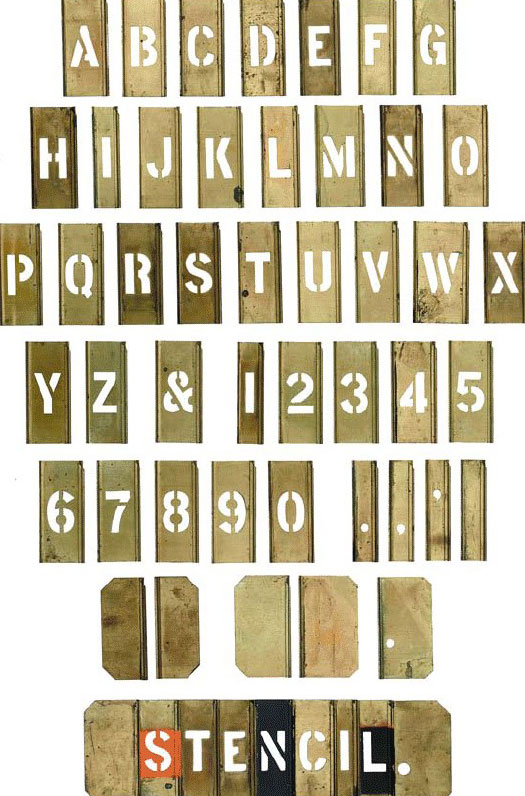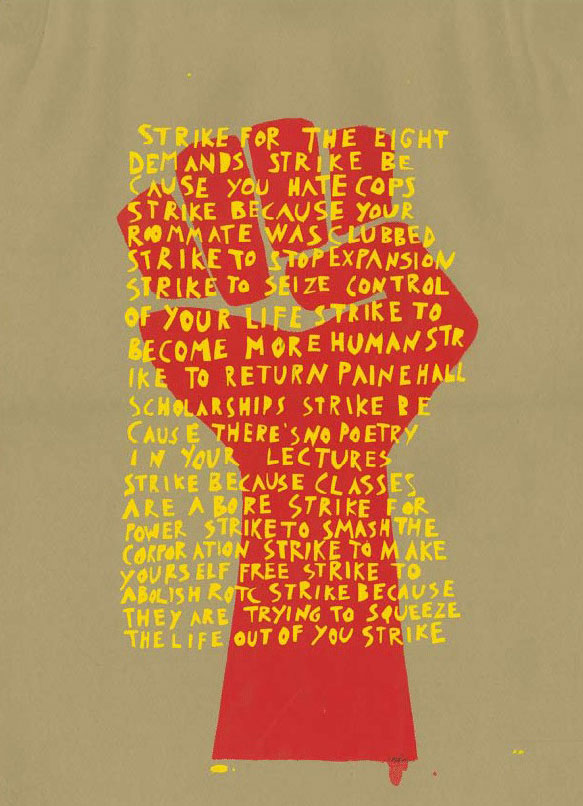- Relief printing
- Intaglio and planographic printing
- Color printing
- Bits and pieces
- Early photography in silver
- Non-silver processes
- Modern photography
- Color notes
- Color photography
- Photography in ink: relief and intaglio printing
- Photography in ink: planographic printing
- Digital processes
- Where do we go from here?
Stencil Letters
 Stencil letters. C. H. Hanson Company. Stencil Set, Marking, Lockedge, Adjustable, Brass, 1 inch size. c. 1945. Each 2 1/2" (6.4 cm) high. The Museum of Modern Art, New York. Gift of Richard Benson. A set of marking stencils made for the United States military during World War II.
Stencil letters. C. H. Hanson Company. Stencil Set, Marking, Lockedge, Adjustable, Brass, 1 inch size. c. 1945. Each 2 1/2" (6.4 cm) high. The Museum of Modern Art, New York. Gift of Richard Benson. A set of marking stencils made for the United States military during World War II.
Stencil has enjoyed a wide application in simple lettering, for packing cases, pedestrian crosswalks, and hundreds of other marking chores. The stencils, often cut out of stiff paper, are held against the support; paint or ink wiped or sprayed across them passes through the areas that have been cut away, leaving the writing behind. The letters we see here are from a set of brass stencils made for the U.S. military during World War II. This alphabet shows the primary design requirement for a stencil: that all interior voids in the letters be connected to the surrounding background. This is necessary because letter parts such as the center of an “O” would fall away in the stencil if not held by small strips to the outside of the letter. The need to hold all the parts together gives stenciled lettering its characteristic look: the letters are simple and read well, but, once printed, have gaps in them to accommodate this structural requirement.
 Silk screen print. Strike Poster Workshop, Graduate School of Design, Harvard University. Strike for the Eight Demands. 1969. 20 7/8 x 14 15/16" (53 x 38 cm). The Museum of Modern Art, New York. Gift of Richard Benson. Silkscreen prints are made with stencils held on an open-weave sheet of stretched cloth. Many modern silkscreen prints use photographic stencils, made by applying light-sensitive emulsion to the screen. Silkscreen is the medium of most of today’s decorated T-shirts.
Silk screen print. Strike Poster Workshop, Graduate School of Design, Harvard University. Strike for the Eight Demands. 1969. 20 7/8 x 14 15/16" (53 x 38 cm). The Museum of Modern Art, New York. Gift of Richard Benson. Silkscreen prints are made with stencils held on an open-weave sheet of stretched cloth. Many modern silkscreen prints use photographic stencils, made by applying light-sensitive emulsion to the screen. Silkscreen is the medium of most of today’s decorated T-shirts.

